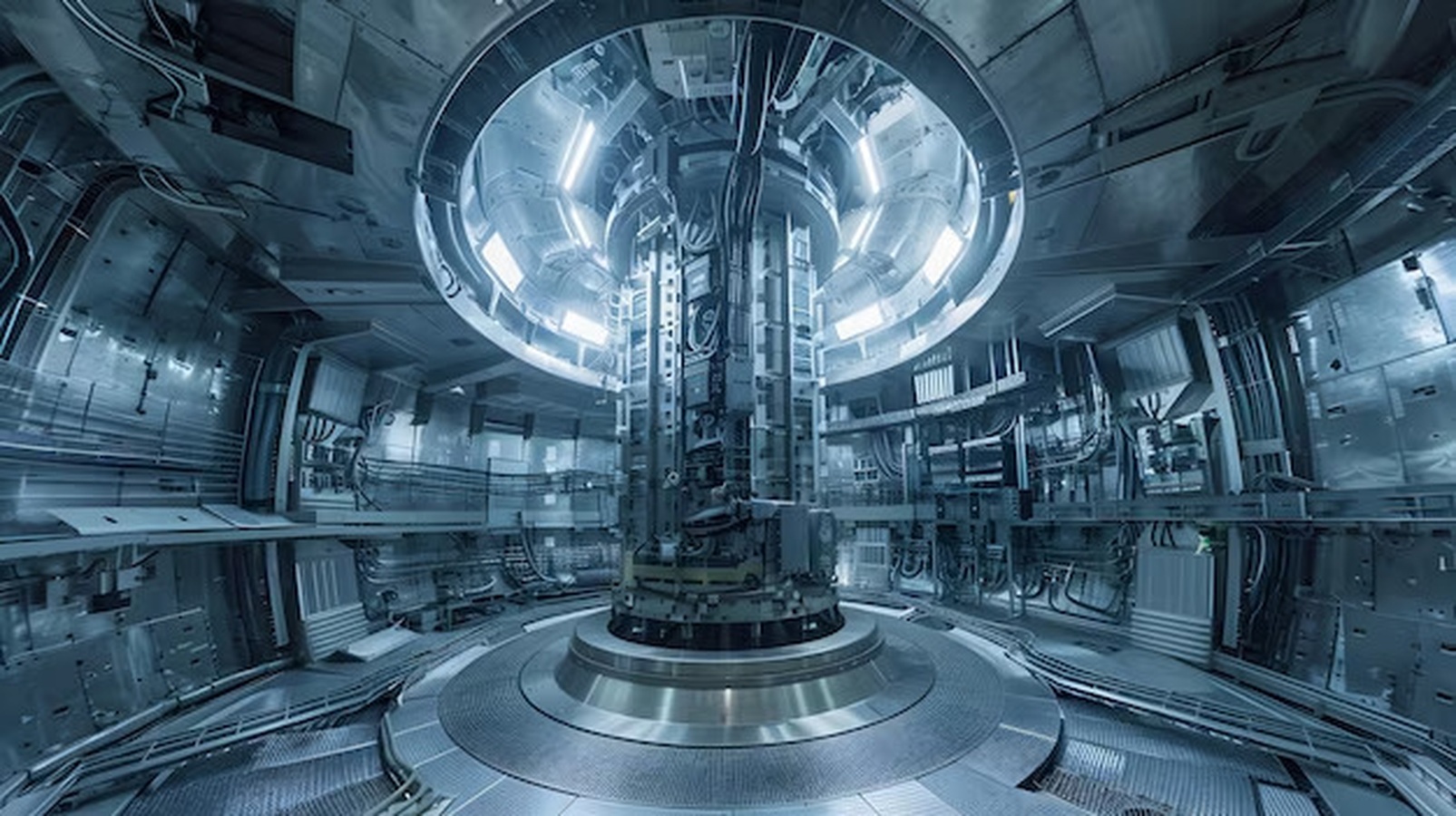Phasics
- Wavefront, MTF and QPI measurement solutions
- Products
- Applications
- Markets
- Company
- Contact us

July 18, 2025
What is Controlled Nuclear Fusion?
Controlled nuclear fusion replicates the way stars like the Sun generate energy, but under controlled conditions on Earth. Using strong magnetic fields or powerful lasers, it fuses light elements such as deuterium and tritium at extremely high temperatures and pressures. This fusion process releases a tremendous amount of energy. Unlike nuclear fission, fusion carries no risk of chain reactions or reactor meltdown. Its main byproducts are harmless helium gas and neutrons, making it a clean, low carbon energy source with minimal long lived radioactive waste. For these reasons, fusion is widely regarded as a promising long-term solution to global energy needs.
Why Controlled Fusion Matters
As the world faces rising energy demands, depleting fossil fuel resources, and growing environmental concerns, the need for a clean, reliable, and sustainable energy source has never been more urgent. Fusion energy offers a compelling solution. It can generate large scale electricity independent of weather or geography, providing longterm energy security. In addition to its potential as a clean power source, fusion research drives progress in a wide range of advanced technologies, including materials science, superconductivity, and plasma physics. Countries that achieve leadership in fusion will gain significant technological and strategic advantages in the global energy landscape.
The Physics of Fusion
Current fusion efforts focus primarily on the deuterium-tritium (D-T) reaction, which requires the lowest activation energy and yields the highest energy output among practical fusion reactions. Sustained fusion depends on achieving conditions defined by the Lawson criterion, which involves three key parameters: plasma temperature, particle density, and energy confinement time. These parameters form the “triple product,” a critical benchmark for evaluating reactor performance. Because fusion occurs in plasma, the fourth state of matter, researchers must contend with turbulence, transport phenomena, and inherent instabilities. Managing and stabilizing plasma behavior remains one of the central challenges in fusion science.
Major Approaches to Fusion
1. Inertial Confinement Fusion (ICF)
ICF compresses fuel capsules using multiple high-intensity laser pulses. The goal is to achieve sufficient temperature and pressure for ignition within nanoseconds. Key facilities leading this research include for example: National Ignition Facility (NIF) in United States Laser, CEA Mégajoule (LMJ) in France and Shenguang Laser Facilities in China.
A significant milestone was achieved at NIF in December 2022, when researchers reached scientific ignition with 3.15 MJ of fusion output from 2.05 MJ of laser input. Since then, performance has steadily improved:
By mid-2025, NIF had successfully completed more than eight ignition shots with Q_sci exceeding 1, demonstrating meaningful progress in fusion energy gain and experimental repeatability.
2. Magnetic Confinement Fusion (MCF)
Magnetic confinement fusion (MCF) relies on strong magnetic fields to contain hot plasma within a reactor, preventing direct contact with reactor walls and minimizing energy loss. This approach is being advanced by several major international facilities. Notable examples include the International Thermonuclear Experimental Reactor (ITER), China’s Experimental Advanced Superconducting Tokamak (EAST) and the HL-3 tokamak, the Joint European Torus (JET) in Europe, South Korea’s K-STAR, and Germany’s Wendelstein 7-X stellarator. These programs have each contributed steady progress toward achieving stable, long duration plasma confinement and increased fusion gain, forming a critical foundation for the future realization of practical fusion power plants.
3. Emerging Fusion Concepts
In addition to ICF and MCF, several alternative concepts are being investigated for their engineering simplicity, compact design, or potential cost efficiency. These include: Magnetized Target Fusion (MTF), Inertial Electrostatic Confinement (IEC), Dense Plasma Focus (DPF), Z-Pinch Configurations, etc.
While still in early development, these systems provide valuable insights and could complement mainstream approaches in the future.
Fusion systems demand exceptionally stable and well-controlled optical setups, particularly in laser-based fusion platforms. Key technical requirements include:
Advanced optical metrology is essential for system performance, alignment accuracy, and diagnostic feedback throughout the fusion process.
Optical Metrology Solutions for Fusion Applications
Phasics contributes to fusion research through its high-resolution, real-time wavefront measurement technology. Our systems have been implemented at key fusion research centers including the NIF and Shenguang facilities, contributing to ongoing experimental efforts.
|
Laser Beam Diagnostics and Thermal Lens Compensation
|
Phasics’ SID4 sensors measure wavefronts, intensity distributions, and thermal lensing effects in real time using a single acquisition. They operate across a broad spectral range from 190 nm to 14 µm, delivering accurate results in complex and high-radiation environments. These systems support beamline alignment and performance stability in active laser chains. Learn more in the related article.
|
|
SID4 sensors integrate with deformable mirrors and spatial light modulators to support closed-loop control of laser focal spots. The wavefront feedback is applied directly without splitting the beam, preserving energy delivery and improving beam quality. This technology is deployed in high-energy laser facilities worldwide to maintain beam shape, focus stability, and alignment during operation. Learn more in the related article.
|
Adaptive Optics Control
|
|
Optical Alignment in Complex Systems
|
The high dynamic range and precision of SID4 sensors make them ideal for aligning large optical systems such as telescopes and long-path laser chains. The system supports both reflective and transmissive configurations and can operate at the system’s working wavelength, ensuring direct and accurate alignment. These capabilities are already in use at major scientific infrastructures, including the European Southern Observatory.
|
|
Using optical path difference (OPD)-based quantitative phase imaging, Phasics sensors can capture spatial and temporal variations in plasma density and gas flow within low-pressure or vacuum environments. This capability enhances understanding of ignition conditions, plasma behavior, and energy coupling during fusion experiments.
|
Plasma and Gas Diagnostics
|
Phasics' optical diagnostics cover a wide range of needs in fusion research, including beamline inspection, adaptive optics control, system alignment, and plasma diagnostics. The company's products are ISO 9001 certified and have demonstrated long-term reliability in demanding scientific environments.
Whether supporting large-scale research installations or experimental system integration, Phasics continues to provide precision tools for advancing controlled fusion technologies.
Supporting the Future of Fusion
As fusion science moves from proof-of-concept experiments toward engineered power systems, the role of precise, real-time diagnostics will only become more critical. Phasics remains committed to developing optical technologies that enable breakthroughs in laser-driven fusion and high-field physics.
For further information or technical documentation, please click here to learn more or contact our team.
